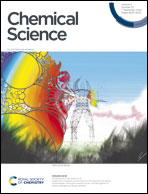Renewable resources for sustainable metallaelectro-catalysed C–H activation
Abstract
The necessity for more sustainable industrial chemical processes has internationally been agreed upon. During the last decade, the scientific community has responded to this urgent need by developing novel sustainable methodologies targeted at molecular transformations that not only produce reduced amounts of byproducts, but also by the use of cleaner and renewable energy sources. A prime example is the electrochemical functionalization of organic molecules, by which toxic and costly chemicals can be replaced by renewable electricity. Unrivalled levels of resource economy can thereby be achieved via the merger of metal-catalyzed C–H activation with electrosynthesis. This perspective aims at highlighting the most relevant advances in metallaelectro-catalysed C–H activations, with a particular focus on the use of green solvents and sustainable wind power and solar energy until June 2020.



 Please wait while we load your content...
Please wait while we load your content...